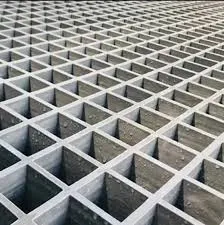
-
 Afrikaans
Afrikaans -
 Albanian
Albanian -
 Amharic
Amharic -
 Arabic
Arabic -
 Armenian
Armenian -
 Azerbaijani
Azerbaijani -
 Basque
Basque -
 Belarusian
Belarusian -
 Bengali
Bengali -
 Bosnian
Bosnian -
 Bulgarian
Bulgarian -
 Catalan
Catalan -
 Cebuano
Cebuano -
 China
China -
 China (Taiwan)
China (Taiwan) -
 Corsican
Corsican -
 Croatian
Croatian -
 Czech
Czech -
 Danish
Danish -
 Dutch
Dutch -
 English
English -
 Esperanto
Esperanto -
 Estonian
Estonian -
 Finnish
Finnish -
 French
French -
 Frisian
Frisian -
 Galician
Galician -
 Georgian
Georgian -
 German
German -
 Greek
Greek -
 Gujarati
Gujarati -
 Haitian Creole
Haitian Creole -
 hausa
hausa -
 hawaiian
hawaiian -
 Hebrew
Hebrew -
 Hindi
Hindi -
 Miao
Miao -
 Hungarian
Hungarian -
 Icelandic
Icelandic -
 igbo
igbo -
 Indonesian
Indonesian -
 irish
irish -
 Italian
Italian -
 Japanese
Japanese -
 Javanese
Javanese -
 Kannada
Kannada -
 kazakh
kazakh -
 Khmer
Khmer -
 Rwandese
Rwandese -
 Korean
Korean -
 Kurdish
Kurdish -
 Kyrgyz
Kyrgyz -
 Lao
Lao -
 Latin
Latin -
 Latvian
Latvian -
 Lithuanian
Lithuanian -
 Luxembourgish
Luxembourgish -
 Macedonian
Macedonian -
 Malgashi
Malgashi -
 Malay
Malay -
 Malayalam
Malayalam -
 Maltese
Maltese -
 Maori
Maori -
 Marathi
Marathi -
 Mongolian
Mongolian -
 Myanmar
Myanmar -
 Nepali
Nepali -
 Norwegian
Norwegian -
 Norwegian
Norwegian -
 Occitan
Occitan -
 Pashto
Pashto -
 Persian
Persian -
 Polish
Polish -
 Portuguese
Portuguese -
 Punjabi
Punjabi -
 Romanian
Romanian -
 Russian
Russian -
 Samoan
Samoan -
 Scottish Gaelic
Scottish Gaelic -
 Serbian
Serbian -
 Sesotho
Sesotho -
 Shona
Shona -
 Sindhi
Sindhi -
 Sinhala
Sinhala -
 Slovak
Slovak -
 Slovenian
Slovenian -
 Somali
Somali -
 Spanish
Spanish -
 Sundanese
Sundanese -
 Swahili
Swahili -
 Swedish
Swedish -
 Tagalog
Tagalog -
 Tajik
Tajik -
 Tamil
Tamil -
 Tatar
Tatar -
 Telugu
Telugu -
 Thai
Thai -
 Turkish
Turkish -
 Turkmen
Turkmen -
 Ukrainian
Ukrainian -
 Urdu
Urdu -
 Uighur
Uighur -
 Uzbek
Uzbek -
 Vietnamese
Vietnamese -
 Welsh
Welsh -
 Bantu
Bantu -
 Yiddish
Yiddish -
 Yoruba
Yoruba -
 Zulu
Zulu
Exploring the Benefits and Applications of FRP Composite Panels in Modern Construction
The Rise of FRP Composite Panels in Modern Construction
In recent years, the construction industry has witnessed a remarkable shift towards the use of advanced materials that enhance performance, sustainability, and efficiency. Among these materials, Fiber Reinforced Polymer (FRP) composite panels have emerged as a game-changer, offering a plethora of advantages over traditional building materials.
FRP composite panels are primarily made from a combination of fibers, such as glass, carbon, or aramid, embedded in a polymer matrix. This unique structure grants them exceptional strength-to-weight ratios, corrosion resistance, and durability, making them ideal candidates for various applications in both residential and commercial construction.
The Rise of FRP Composite Panels in Modern Construction
Furthermore, FRP panels offer outstanding resistance to corrosion and chemical exposure. This property is particularly advantageous in environments where buildings are subjected to harsh conditions, such as coastal areas or industrial zones. Traditional materials often succumb to rust and degradation over time, necessitating costly repairs and maintenance. In contrast, FRP panels maintain their integrity and aesthetic appeal, ensuring longevity and low lifecycle costs.
frp composite panels

In addition to their durability and strength, FRP composite panels also provide excellent thermal and acoustic insulation. This characteristic not only contributes to energy efficiency by reducing heating and cooling demands but also enhances occupant comfort by minimizing noise transmission. As sustainability becomes a central concern in modern construction, the energy-efficient properties of FRP panels align perfectly with green building standards and certifications.
The versatility of FRP composite panels is another compelling reason for their growing popularity. They can be manufactured in various shapes, sizes, and finishes, allowing architects and designers to explore innovative design solutions. Whether used for cladding, roofing, or interior applications, these panels can be tailored to meet specific aesthetic and functional requirements.
Furthermore, the ease of fabrication and customization of FRP panels enables faster construction timelines. Unlike traditional materials that may require extensive processing and curing times, FRP panels can be prefabricated and quickly installed on-site. This acceleration in the construction process can significantly reduce project duration, allowing for quicker occupancy and return on investment.
As the demand for energy-efficient and sustainable building materials continues to rise, FRP composite panels are poised to play a crucial role in the future of construction. With their impressive attributes, including lightweight design, corrosion resistance, thermal insulation, and versatility, FRP panels are not only meeting the needs of today’s builders but are also paving the way for innovative, environmentally friendly building practices.
In conclusion, the increasing adoption of FRP composite panels in construction reflects the industry's broader commitment to sustainability and performance. As technology advances and more research is conducted, we can expect to see even more applications and improvements in FRP materials. This innovative approach to building will not only enhance the functionality and aesthetics of structures but also contribute to a more sustainable built environment for future generations. With their blend of versatility, durability, and efficiency, FRP composite panels represent a significant evolution in construction materials, marking a new era in modern architecture and building design.
Latest news
-
High-Quality Fiberglass Car Bodies Durable GRP Car & Boat Body SolutionsNewsJul.08,2025
-
High-Quality Fiberglass Dual Lamination Product Manufacturer Durable FRP & GRP Dual Lamination SolutionsNewsJul.08,2025
-
Rectangular Tank with Dimensions for GRP Calculation Custom Fiberglass GRP Rectangular TanksNewsJul.07,2025
-
High-Quality Fiberglass Weir Custom FRP Weir & Fiberglass Tanks ManufacturerNewsJul.07,2025
-
CPVC FRP Pipe A Reliable Choice for Industrial Applications High Strength & Corrosion ResistanceNewsJul.07,2025
-
Fiberglass Scrubber for Effective Cleaning and Stain Removal – Superior Performance in Various ApplicationsNewsJul.06,2025









